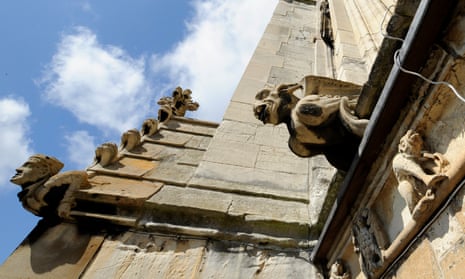The gargoyles that decorate many churches are not so frightening as they used to be, at least during heavy rain. Their purpose was to house a pipe linked to the guttering. Water gushed out of their mouths, the plan being to throw it as far out from the walls as possible, to avoid damp damaging the fabric of the building.
Passersby would have needed to keep a weather eye out to avoid this waterspout pouring from a great height.
There is some debate about when downpipes made gargoyles redundant. The problem might not have been technical know-how but the cost.
Lead was used for downpipes and was very expensive. Henry VIII inadvertently solved this problem with the dissolution of the monasteries, releasing vast amounts of lead from demolished abbeys, so providing parish churches with the material to fit more guttering and downpipes.
This also caused a revolution in church architecture. Many had steep roofs with large overhangs to make sure that rain water was thrown a long way out from the walls to keep them dry. Cheap lead for guttering and downpipes meant the pitch of the roof could be lowered and a new line of windows inserted high in the walls to allow light to flood into the interior.
Many church towers still carry the marks made by the original nave roof as an inverted V-shape in their stonework, and those that could afford it have an extra line of 16th-century windows – both an indirect result of Henry VIII’s marital problems. Paul Brown

Comments (…)
Sign in or create your Guardian account to join the discussion